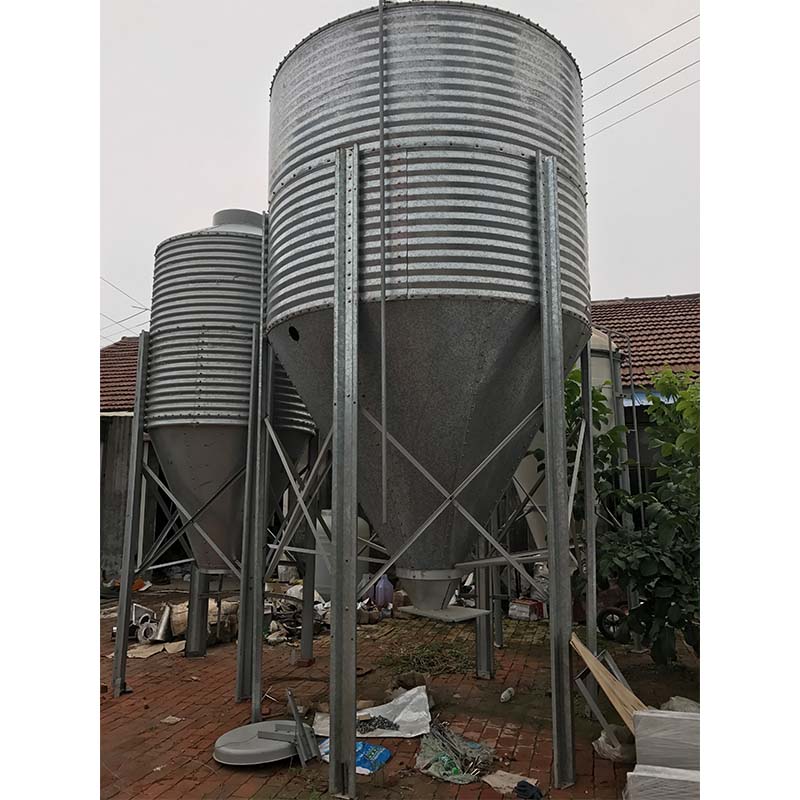Poultry Feed Mixer and Grinder for Optimal Nutrition and Efficiency in Livestock Farming
Aug . 20, 2024 01:12 Back to list
Poultry Feed Mixer and Grinder for Optimal Nutrition and Efficiency in Livestock Farming
The Importance of Poultry Feed Grinders and Mixers in Modern Farming
In the realm of modern poultry farming, the efficiency and productivity of feeding systems play a crucial role in overall farm management. Among the essential equipment that farmers rely upon are poultry feed grinders and mixers. These machines not only streamline the feeding process but also contribute significantly to the health and growth of poultry by ensuring the optimal composition of their diet.
Understanding Poultry Feed Grinders
Poultry feed grinders, as the name suggests, are designed to break down raw feed ingredients into finer particles. This process is critical because it enhances the digestibility of the feed. Chickens and other poultry species have relatively small digestive tracts; therefore, larger feed particles can lead to poor digestion and nutrient absorption. By grinding the feed, farmers can ensure that the poultry receive the maximum nutritional value from their meals.
Feed grinders come in various types, including hammer mills and roller mills. Hammer mills use hammers attached to a rotating shaft to crush the feed materials, while roller mills utilize cylindrical rollers to achieve a similar effect. The choice between the two often depends on the specific needs of the farm and the type of feed being processed.
The Role of Feed Mixers
Once the feed is ground, the next step is mixing. Poultry feed mixers are essential for combining different ingredients and ensuring a homogeneous diet for the birds. A well-mixed feed assures that each bird receives the appropriate levels of vitamins, minerals, proteins, and carbohydrates necessary for growth and egg production.
There are several types of mixers available in the market, including horizontal and vertical mixers. Horizontal mixers, with their tub-like structure, are excellent for large-scale operations where a consistent mix is necessary across substantial quantities of feed. On the other hand, vertical mixers are compact and suitable for smaller farms or operations where space is a restriction. Regardless of the type, effective mixing is critical as uneven distribution of nutrients can lead to health issues among poultry, including poor growth rates and increased susceptibility to disease.
poultry feed grinder and mixer

Benefits of Using Feed Grinders and Mixers
The integration of feed grinders and mixers in poultry farming presents numerous advantages
1. Cost Efficiency By producing feed on-site, farmers can save significantly on feed costs. Buying bulk raw materials is often cheaper than purchasing pre-mixed feeds.
2. Customization Farmers can tailor the feed formulas to meet the specific nutritional needs of their flock, based on growth stage or health status. This flexibility leads to improved overall productivity.
3. Quality Control By managing the feed production process, farmers can ensure that only high-quality ingredients are used, thereby improving the health and performance of their poultry.
4. Waste Reduction Efficient grinding and mixing optimize feed conversion ratios, essentially reducing waste and ensuring that nutrients are not lost in the process.
Conclusion
In conclusion, poultry feed grinders and mixers are indispensable tools in modern poultry farming. They not only enhance the efficiency of feed production but also contribute directly to the health and productivity of the birds. As the poultry industry continues to evolve, the importance of such machinery will undoubtedly increase, driving farmers to adopt more advanced technologies. Investing in quality feed grinders and mixers can lead to substantial long-term benefits, making them a fundamental component of successful poultry management. With the right feeding strategy, farmers can ensure healthier flocks, improve productivity, and ultimately achieve greater profitability in their operations.
-
Hot Sale 24 & 18 Door Rabbit Cages - Premium Breeding Solutions
NewsJul.25,2025
-
Automatic Feeding Line System Pan Feeder Nipple Drinker - Anping County Yize Metal Products Co., Ltd.
NewsJul.21,2025
-
Automatic Feeding Line System Pan Feeder Nipple Drinker - Anping County Yize Metal Products Co., Ltd.
NewsJul.21,2025
-
Automatic Feeding Line System - Anping Yize | Precision & Nipple
NewsJul.21,2025
-
Automatic Feeding Line System - Anping Yize | Precision & Nipple
NewsJul.21,2025
-
Automatic Feeding Line System-Anping County Yize Metal Products Co., Ltd.|Efficient Feed Distribution&Customized Animal Farming Solutions
NewsJul.21,2025






